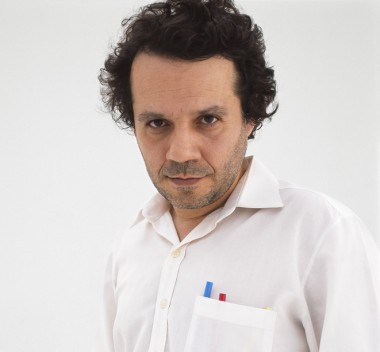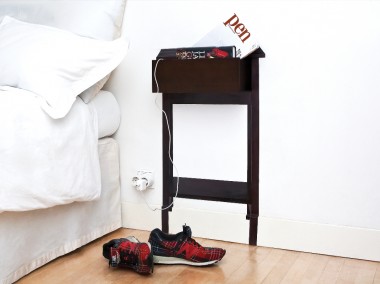Q&A with Fernando Brízio
This week we are releasing ‘What you see is not’ by Fernando Brízio. A playful combination of function and illusion, a cabinet has been reduced to its two-dimensional image, leaving only one three-dimensional detail intact—an open drawer, perfect for a book or two. A playful combination of function and illusion that saves material too. Here’s our interview with the Lisbon-based designer, Fernando.
What drew you to work with illusion?
In the Buster Keaton short film, The High Sign, Buster takes a can of paint and a brush, draws a hanger, and hangs his hat on it. When I saw the film, I immediately pictured myself doing that exact same gesture. In that scene, Buster performs what designers do—he makes a drawing that becomes a “useable” object.
Can you explain the concept of this piece?
What you see changes when you move around this object. In a certain position you see a conventional cabinet with an open drawer, but when you move sideways it becomes a flat, somehow deformed image, and the archetypal reference of a cabinet is lost. Is it a cabinet with a drawer? Or is it just a suspended drawer?
What role does illusion play in your work?
The illusion in this piece creates a situation where you observe the object’s form and deform, depending on your position in space. I am interested in this type of interaction between the object and the viewer—what you see is a result of who you are, how you think and how you are mentally and physically constituted.
How do you like to see people interact with this piece?
I like to watch people search for the point of view, when for them, the cupboard seems to be “right,” sometimes covering one eye with their hand to get it perfect. There is a French expression – “ça tape à l’œil”- literally meaning “it hits the eye”. It does not only interest me that my work “hits the eye,” but also that it challenges the mind and our perception of reality.


